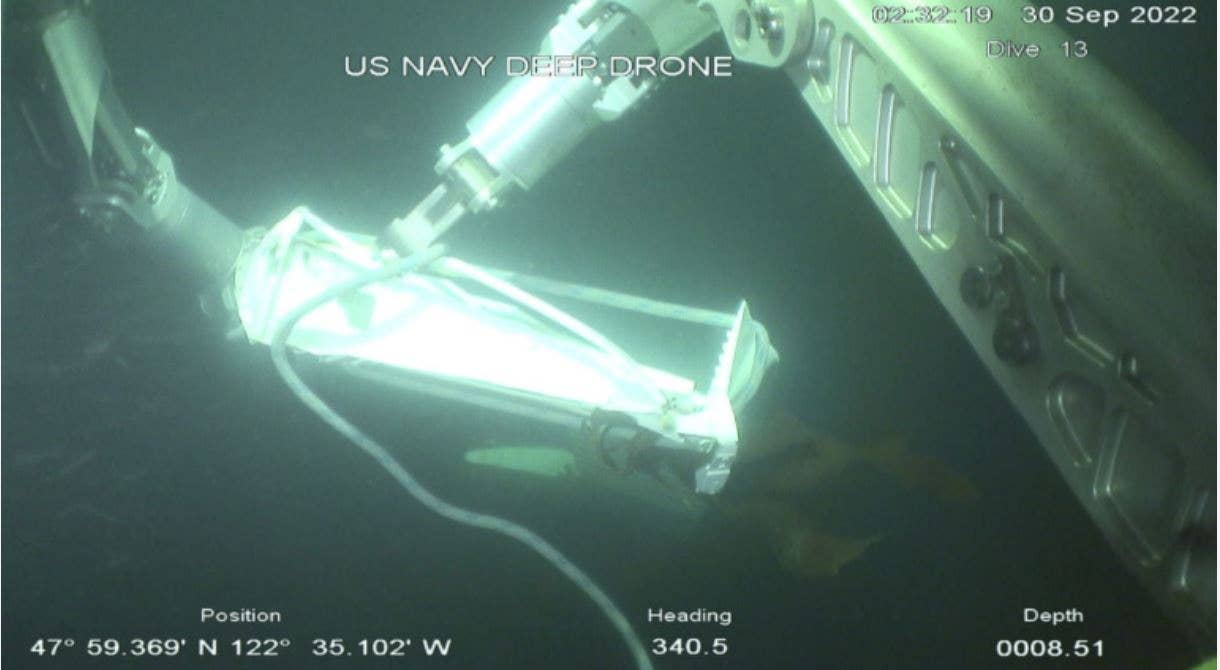NTSB Releases New Details in Fatal DHC-3 Accident That Killed 10
The 500-page docket of the fatal crash offers witness testimony and a view into the NTSB investigation process.

The left elevator of the accident airplane being recovered from the ocean floor. [Credit: NTSB]
Nearly a year ago, a de Havilland DHC-3 Turbine Otter airplane went down in Mutiny Bay near Freeland, Washington, killing all 10 on board. Friday the National Transportation Safety Board (NTSB) opened the public docket for its ongoing investigation into the Sept. 4, 2022 accident.
The aircraft was registered to Northwest Seaplanes, a Part 135 operation. The aircraft was on a flight between Friday Harbor Seaplane Base (W33) and Renton Municipal Airport (KRNT) at the time of the accident. It was the pilot’s second flight of the day.
The docket contains more than 500 pages of information collected by NTSB investigators but does not draw a conclusion as to why the airplane crashed.
"It’s part of our investigative process. When there’s a public fact-finding hearing, we release the docket at that time. Since there was no hearing for this one, we released it when the majority of factual information has been gathered," said Peter Knudson, a spokesperson for NTSB. "The release of the docket materials is part of our commitment to transparency in our process. Every investigation (in all transportation modes) is supported by an accident docket. They are typically released at or near the conclusion of the investigation."
Knudson concludes that the docket materials in major investigations are often released prior to the final report "to allow the public an opportunity to understand the factual elements of the investigation. Our analysis of those facts will be in the final report."
The Docket Details
The docket offers an opportunity to look into how an investigation is performed. There are 30 pages devoted to weather information from the time of the accident, noting, in particular, the strong winds from the south resulting in choppy conditions and a strong current on the water.
It took several days to locate the wreckage and retrieve it.
There are 73 pages of witness accounts. One of the witness statements came from the pilot of a Cessna 120 that flew through the area just prior to the accident and described significant wind shear. Some are detailed descriptions of the crash and of the witnesses' attempts to come to the rescue of the occupants of the aircraft only to realize that there were no survivors. They arrived on scene several minutes before fire and rescue and the Coast Guard and described their experience in detail.
There are numerous photos of the fragmented wreckage and personal effects of the passengers and pilot. Photographs taken from inside the aircraft were emailed to a family member just minutes before the accident.
The NTSB final report, to be issued at a later date, will include analysis, findings, recommendations, and probable cause determinations related to the accident.
The public docket for this investigation is available online at NTSB Docket - Docket Management System.

Sign-up for newsletters & special offers!
Get the latest FLYING stories & special offers delivered directly to your inbox






